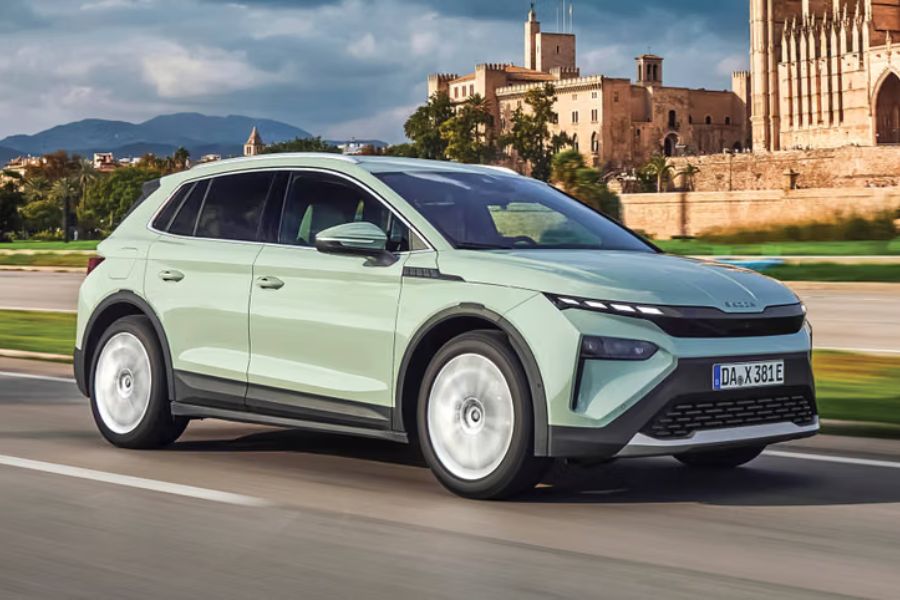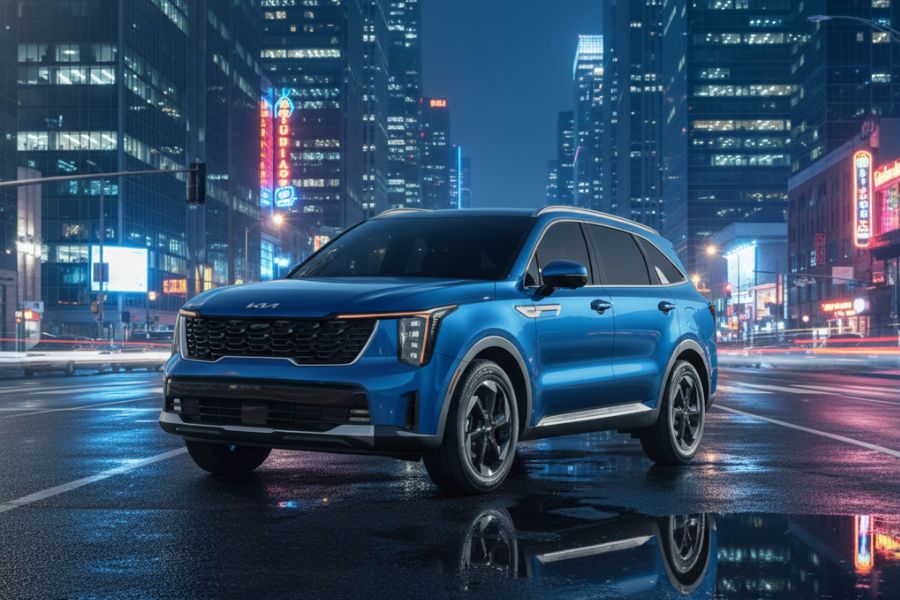Ducati has officially launched the updated Multistrada V2 in India, introducing several mechanical and cosmetic upgrades to its popular middleweight adventure tourer. With this update, the Italian ADV now squares off against two formidable rivals — the Triumph Tiger 900 GT and the BMW F 900 GS Adventure. Here’s how the three adventure bikes stack up against each other in terms of engine, chassis, features, and pricing.
Engine and Performance: Ducati Packs the Strongest Punch
Despite their near-identical engine capacities, the three motorcycles use very different engine configurations. The Ducati Multistrada V2 is powered by an 890cc, liquid-cooled V-twin derived from the Streetfighter and Panigale V2. It develops 115.6hp at 10,750rpm and 92.1Nm at 8,250rpm, making it the most powerful motorcycle in this comparison.
The BMW F 900 GS Adventure comes close with its 895cc parallel-twin engine producing 105hp and 93Nm, while the Triumph Tiger 900 GT features an 888cc inline-triple that generates 108hp and 90Nm.
All three bikes come equipped with a 6-speed gearbox, but their unique engine layouts ensure distinct power delivery and riding character — with the Ducati being sportiest, the Triumph most refined, and the BMW offering the gruffest midrange punch.
| Specification | Ducati Multistrada V2 | BMW F 900 GS Adventure | Triumph Tiger 900 GT |
|---|---|---|---|
| Engine | 890cc, V-twin, liquid-cooled | 895cc, parallel-twin, liquid-cooled | 888cc, inline-triple, liquid-cooled |
| Power | 115.6hp @ 10,750rpm | 105hp @ 8,500rpm | 108hp @ 9,500rpm |
| Torque | 92.1Nm @ 8,250rpm | 93Nm @ 6,750rpm | 90Nm @ 6,850rpm |
| Gearbox | 6-speed | 6-speed | 6-speed |
Weight and Dimensions: BMW is the Heaviest, Ducati the Lightest
Ducati’s focus on weight reduction is evident — the new Multistrada V2 is 18kg lighter than its predecessor, thanks to its new aluminium monocoque frame and lighter engine internals. The bike weighs 199kg (dry), and with its 19-litre tank, it’s expected to have a kerb weight close to the Triumph Tiger 900 GT’s 219kg, still significantly lighter than the BMW F 900 GS Adventure’s 246kg.
The BMW offers the largest 23-litre fuel tank, ideal for long-distance touring, while the Ducati’s smaller tank limits range slightly.
Seat heights vary slightly across the trio: the Ducati offers an 830-850mm adjustable seat, the Triumph ranges between 820-840mm, and the BMW has a tall 875mm seat, which can be lowered to 835mm or even 825mm with optional seats.
| Specification | Ducati Multistrada V2 | BMW F 900 GS Adventure | Triumph Tiger 900 GT |
|---|---|---|---|
| Seat height | 830-850mm | 875mm (835mm/825mm optional) | 820-840mm |
| Kerb weight | 199kg (dry) | 246kg | 219kg |
| Fuel tank | 19 litres | 23 litres | 20 litres |
| Wheelbase | 1572.5mm | NA | 1556mm |
Chassis and Suspension: BMW Leads Off-Road, Triumph and Ducati Excel On-Road
The Ducati Multistrada V2 and Triumph Tiger 900 GT both use 19-inch front and 17-inch rear alloy wheels, highlighting their road-oriented nature. The BMW F 900 GS Adventure, on the other hand, comes with 21-inch front and 17-inch rear spoked wheels, emphasizing its off-road focus.
Ducati offers a fully adjustable USD fork and monoshock with 170mm of travel. The V2 S variant takes it a notch higher with the Ducati Skyhook Suspension EVO semi-active system.
The Tiger 900 GT gets slightly longer front suspension travel at 180mm, while the BMW offers the most generous setup — 230mm front and 215mm rear, making it the best choice for serious off-road riders.
| Specification | Ducati Multistrada V2 | BMW F 900 GS Adventure | Triumph Tiger 900 GT |
|---|---|---|---|
| Suspension (F/R) | USD fork / Monoshock | USD fork / Monoshock | USD fork / Monoshock |
| Wheel travel (F/R) | 170mm / 170mm | 230mm / 215mm | 180mm / 170mm |
| Tyre size (F/R) | 120/70-ZR19 / 170/60-ZR17 | 90/90-R21 / 150/70-R17 | 100/90-19 / 150/70-R17 |
| Brakes (F/R) | 320mm / 265mm | 305mm / 265mm | 320mm / 255mm |
Features and Equipment: All Packed with High-End Tech
All three motorcycles are equipped with modern electronics and rider aids. The Ducati Multistrada V2 features a 5-inch TFT display, cornering ABS, traction control, wheelie control, and engine braking control, managed by a 6-axis IMU.
The Triumph Tiger 900 GT takes the edge in infotainment with a 7-inch TFT display, multiple riding modes, and a comprehensive electronic suite including cornering ABS and traction control.
Meanwhile, the BMW F 900 GS Adventure comes with a 6.5-inch TFT, two riding modes, ABS Pro, heated grips, knuckle guards, and an aluminium engine guard — making it the most adventure-ready out of the box.
Price and Value: Ducati Commands a Premium
Among the trio, the Ducati sits at the top of the pricing ladder. The Multistrada V2 is priced at ₹18.88 lakh (ex-showroom, Delhi), while the higher-spec V2 S costs ₹21 lakh. The BMW F 900 GS Adventure is positioned in the middle at ₹16.14 lakh, and the Triumph Tiger 900 GT remains the most affordable at ₹14.40 lakh (price to be updated with GST revisions).
| Model | Ex-showroom Price (Delhi) |
|---|---|
| Ducati Multistrada V2 | ₹18.88 lakh |
| Ducati Multistrada V2 S | ₹21 lakh |
| BMW F 900 GS Adventure | ₹16.14 lakh |
| Triumph Tiger 900 GT | ₹14.40 lakh |
Verdict: Which One Should You Choose?
-
Ducati Multistrada V2: Ideal for riders who prioritize performance, refinement, and premium feel. It’s the most powerful and technologically advanced in this comparison.
-
BMW F 900 GS Adventure: Best suited for riders who want serious off-road capability with long touring range and rugged durability.
-
Triumph Tiger 900 GT: The most balanced and value-oriented option, offering refinement, comfort, and versatility for both touring and city use.
In short, the Ducati Multistrada V2 leads on power and sophistication, the BMW F 900 GS Adventure excels in adventure credentials, and the Triumph Tiger 900 GT delivers the best blend of features and affordability.
Read More:




